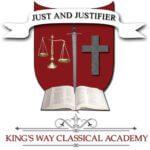Who was William Wallace? William Wallace (1272-1305) was Scotland’s legendary deliverer from English tyranny. His exploits were chronicled by the English novelist Jane Porter in The Scottish Chiefs, (1809). He rose out of the peasantry of the village of Lanark, nestled in the hills between Edinburgh and Glasgow. The murder of his young wife by an English nobleman provoked Wallace to take up the sword. Rallying the countryside to Corie Lynn, Wallace waved his sword. “I come in the name of all ye hold dear,” he said, “to tell you the poniard of England is unsheathed! With this sword last night did the tyrant Heselrigge break into my home and murder my wife!” “Death and Lady Marion” became the battle cry that inspired the peasant-patriots. They rose en mass to cast off the chains of Edward’s tyranny. Wallace was the champion who led the Scotch from victory to victory. But then he was treacherously betrayed and sent to the Tower of London. Tortured without mercy, Wallace was at last drawn and quartered. But his heroic martyrdom inspired Scotland’s finest hour. Even the nobility who betrayed Wallace eventually joined the resistance, led by Robert Bruce.
Historical context. Robert Bruce rescued England’s young Edward I from a Saracen prison during the 7th Crusade (1270). Edward, however, betrayed that friendship, ignoring Bruce’s legitimate claim to the Scottish throne. When granted the honor of serving as referee between the two disputants to the Scottish throne he chose the flattering John Baliol. When the Scots resisted, Edward pressed a bogus claim as Scotland’s liege lord. He used this to justify an invasion and occupation, thus securing his just title, “the Usurper.” Roused to action by the murder of his wife, Wallace won many stunning victories. These included two decisive battles at Stirling Castle, before he was betrayed and tortured to death.
After most of the Scottish nobles had caved in, including the wavering Bruce, Porter picks up the story of Wallace’s resistance. “….but though Scottish Chiefs is panegyric, rather than a formal history,” notes editor Kate Wiggin, “it has been accepted by critics as genuine in spirit, if not in absolute detail.” Eventually, Bruce took up Wallace’s “lost cause” and led the Scots to a decisive victory.
Summary of Porter’s teaching. The Scottish Chiefs outlines the hierarchy of the key Scottish clans. That includes the House of Wallace, before the rise of clan Bruce. Ms. Porter has a tendency to sugar coat her heroes. She flatters William Wallace almost as much as Mel Gibson’s 1995 movie, Braveheart, degraded him. The real Wallace probably lies somewhere in-between. Chivalry and courtliness were the order of the day. But they probably were not practiced at the idealistic level which Porter depicts in Victorian style. In spite of its eccentricities, Porter’s is one of those adventure tales that is simply rich and edifying.
The Scottish Chiefs provides some sense of the harshness and terror of the middle ages. Typical were the brutality of hand-to-hand combat and the savagery of the Edwardian court in its quest for a united Britain. The storyline is at times difficult to follow. The reader will also be well-served by referring often to an English map, the earlier the better. Porter paints an idealized gentry and perhaps also an unrealistic tone of godliness. But the story nonetheless teaches many valuable lessons.
Implications for subsequent history. In all the annals of history there are few examples to match this breathtaking struggle. The nearly crushed Scots rose from the dust to cast off the yoke of Edward I. The story offers such inspiration to the downtrodden, that Napoleon ordered the book banned. From a strictly military standpoint the Scottish war for independence marks an end to the dominance of Medieval mounted warfare. The tales of the means used to reduce and destroy the castle strongholds of Scotland are pure adventure and classic examples of military tactics.
Biblical analysis. The greatest stories of men are a shadow of God’s great gospel story. Christ the conquering hero suffers and struggles with death to rescue his helpless bride. The story line is told and retold in Scripture. It is seen in the deliverance of the children of Israel from Egyptian slavery. It is seen in Abraham’s recovery of his kidnapped family (Gen. 14:14-16). It is seen in David’s rescue of his family and friends from the Amalekites (I Sam. 30:17). In like manner, William Wallace resisted evil unto death for the freedom of his beloved Scotland with the battle cry, “God armeth the patriot.” “Except a corn of wheat fall into the ground and die it abideth alone, but if it die it bringeth forth much fruit (John 12:24).
Corrective or prescriptive actions. While freedom reigns secure we must guard her with jealous eye. Never forget the treachery dwelling in the bosom of false friends (like Edward). When such treachery has done its worst, we may draw courage from the example of men like William Wallace who resisted unto death the tyrant’s heel. It may be our blood that soaks the soil in which freedom takes root and blooms.


